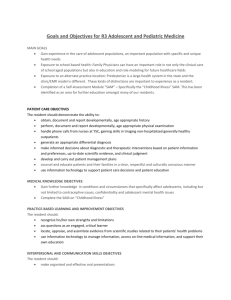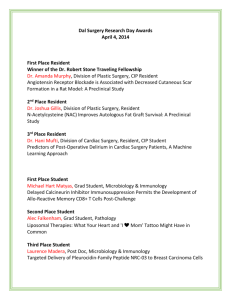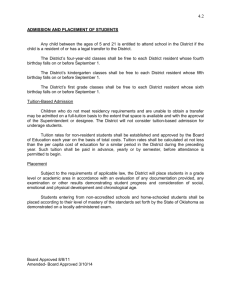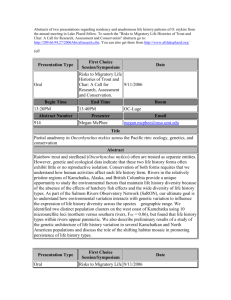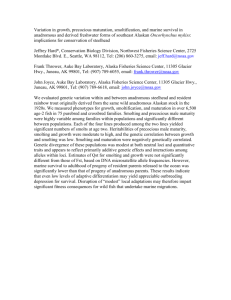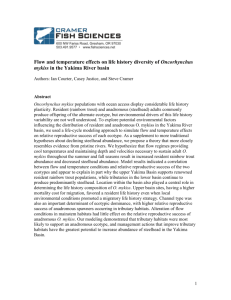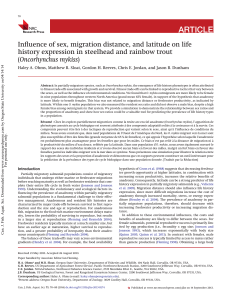Abstract ()
advertisement
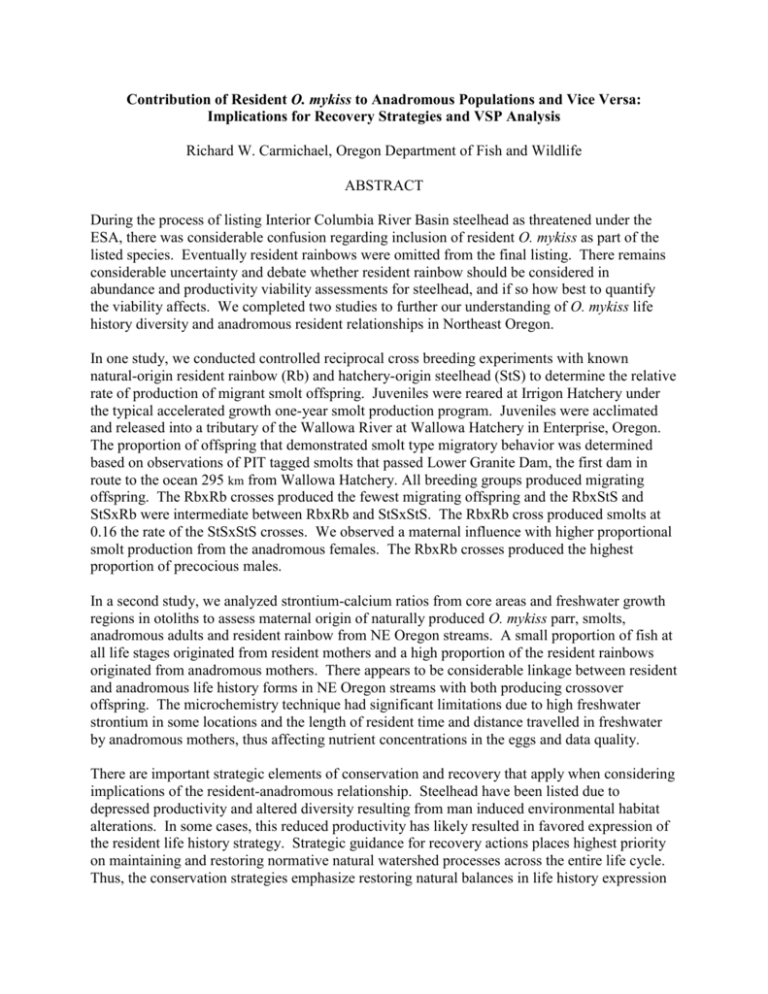
Contribution of Resident O. mykiss to Anadromous Populations and Vice Versa: Implications for Recovery Strategies and VSP Analysis Richard W. Carmichael, Oregon Department of Fish and Wildlife ABSTRACT During the process of listing Interior Columbia River Basin steelhead as threatened under the ESA, there was considerable confusion regarding inclusion of resident O. mykiss as part of the listed species. Eventually resident rainbows were omitted from the final listing. There remains considerable uncertainty and debate whether resident rainbow should be considered in abundance and productivity viability assessments for steelhead, and if so how best to quantify the viability affects. We completed two studies to further our understanding of O. mykiss life history diversity and anadromous resident relationships in Northeast Oregon. In one study, we conducted controlled reciprocal cross breeding experiments with known natural-origin resident rainbow (Rb) and hatchery-origin steelhead (StS) to determine the relative rate of production of migrant smolt offspring. Juveniles were reared at Irrigon Hatchery under the typical accelerated growth one-year smolt production program. Juveniles were acclimated and released into a tributary of the Wallowa River at Wallowa Hatchery in Enterprise, Oregon. The proportion of offspring that demonstrated smolt type migratory behavior was determined based on observations of PIT tagged smolts that passed Lower Granite Dam, the first dam in route to the ocean 295 km from Wallowa Hatchery. All breeding groups produced migrating offspring. The RbxRb crosses produced the fewest migrating offspring and the RbxStS and StSxRb were intermediate between RbxRb and StSxStS. The RbxRb cross produced smolts at 0.16 the rate of the StSxStS crosses. We observed a maternal influence with higher proportional smolt production from the anadromous females. The RbxRb crosses produced the highest proportion of precocious males. In a second study, we analyzed strontium-calcium ratios from core areas and freshwater growth regions in otoliths to assess maternal origin of naturally produced O. mykiss parr, smolts, anadromous adults and resident rainbow from NE Oregon streams. A small proportion of fish at all life stages originated from resident mothers and a high proportion of the resident rainbows originated from anadromous mothers. There appears to be considerable linkage between resident and anadromous life history forms in NE Oregon streams with both producing crossover offspring. The microchemistry technique had significant limitations due to high freshwater strontium in some locations and the length of resident time and distance travelled in freshwater by anadromous mothers, thus affecting nutrient concentrations in the eggs and data quality. There are important strategic elements of conservation and recovery that apply when considering implications of the resident-anadromous relationship. Steelhead have been listed due to depressed productivity and altered diversity resulting from man induced environmental habitat alterations. In some cases, this reduced productivity has likely resulted in favored expression of the resident life history strategy. Strategic guidance for recovery actions places highest priority on maintaining and restoring normative natural watershed processes across the entire life cycle. Thus, the conservation strategies emphasize restoring natural balances in life history expression and anadromous-resident production relationships. Achieving recovery of steelhead and restoring natural balance may result in reduced abundance and expression of resident O. mykiss. Consideration of resident O. mykiss in viability assessments of steelhead is very complex. Quantifying the influence of resident rainbows on steelhead viability requires at minimum, understanding of spawner abundance and fecundity of both life history types, degree of interbreeding, production flow between life history types and breeding groups as well as life stage specific survival and full life cycle productivity. Due to the complex nature of the interactions, we would expect highly variable relationships between populations that reside in different geographic areas and in divergent habitat types. Considerably more quantitative assessment is needed to improve our understanding of these complex relationships and to quantify the benefits related to steelhead viability.


